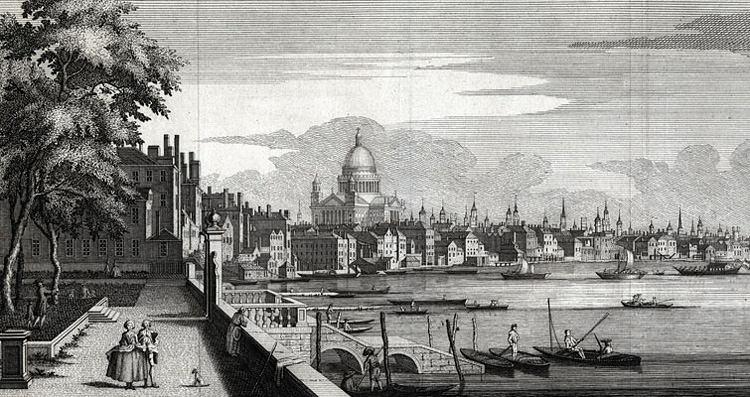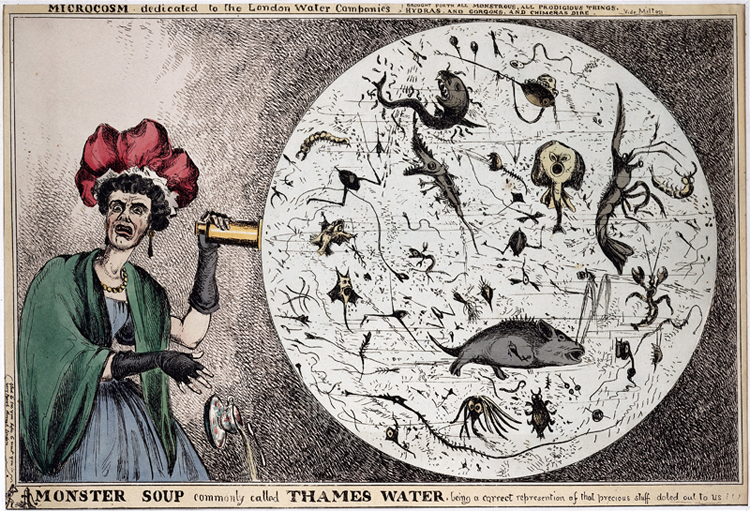You have no items in your cart. Want to get some nice things?
Go shopping
Last Saturday in London, a host of writers and historians – poet laureate Andrew Motion, architectural guru Dan Cruickshank, Iain Sinclair (Hackney, That Rose-Red Empire: A Confidential Report), Susan Brigden (New Worlds, Lost Worlds: The Rule of the Tudors 1485-1603), Robert Douglas-Fairhurst – came together for one day at Somerset House to explore the remarkable history of the capital’s much maligned and exalted waterway.
Robert Douglas-Fairhurst, author of the prize-winning book, Becoming Dickens: The Invention of a Novelist, provided a wonderfully detailed and enthusiastic evocation of the sights, sounds and smells of the Thames during Victorian times. We were transported back to to an untidy and chaotic scene crowded with boats of various sizes, a reminder of Charles Darwin’s theory of the survival of the fittest in an increasingly competitive world.
But it wasn’t just what was sitting on the wavering water that was intriguing, but also the characteristics of the liquid itself. The salty river water was a blend of thick, glutinous mud, factory chemicals and blood, which smelt repulsively of filth and excrement – and within the same vicinity of the Thames was the strong stench of factory smoke. In 1828, William Heath created a colour etching titled, A Monster Soup commonly called Thames Water, depicting a woman’s terrified astonishment at the horrifically fantastical creatures lurking below the riverline.

In 1858, the warmness of the weather exacerbated the foulness of the odours emanating from the Thames – what is known as the “Great Stink”. Sewage was leaking from cesspits and privies were overflowing. The hideously polluted water meant that London suffered from frequent cholera epidemics. It was Sir Joseph William Bazalgette (28 March 1819 – 15 March 1891), an English civil engineer, who brought about major and necessary changes to London’s sewer network, finally taming the malicious beast.
The Thames also teemed with numerous illustrious stories of Victorian occupations. There were the sewer-hunters who scraped the sewers for any valuables, perhaps an old penny or a rag. This was a highly dangerous job, since there was the risk of drowning in flash floods. There were also the watermen, the lightermen, the tobacco smugglers, the eccentrics and the dredgermen who retrieved dead bodies from the river.
The Thames was itself a cruel murderer and a mere witness to many deaths. The slumped bodies of victims were dumped there, while other unfortunate individuals accidentally drowned in the river’s powerful currents. Some met their ends by choice, some due to accidents, shipping disasters, such as the disastrous voyage of the steamer Princess Alice, killing over 640 people.
But the river isn’t all about terrible tragedies and grim stories. The river was a source of inspiration for writers Lewis Carroll and Kenneth Grahame. In the summer of 1862, Lewis Carroll imagined a vibrantly mad world populated by many strange characters, the White Rabbit, the Mad Hatter, the Cheshire Cat and so many others in the brilliant Alice in Wonderland. For Grahame, it was the Thames that helped bring to life the tales of Toad, Mole and Ratty in the much-loved The Wind in the Willows.
Robert Douglas-Fairhurst’s described the river in different and contrasting ways – for instance, the river is like an “old friend” and a moody, “old flirt”. This was also how the other writers and historians described the Thames. Andrew Motion called it a beautifully feminine entity, whilst Dan Cruickshank called it a gloomy and snaky creature. Roger Williams claimed that it was monstrous and cruel; Susan Brigden called it a place of adventure, joy and celebration. The Thames is both familiar and unfamiliar, a place of innocence and a place of wickedness and heartbreak. It is mysterious and difficult to define, and the only thing that the writers could agree on was that the Thames has a rich and immensely fascinating history.

About Liz Cookman
Liz is a thoroughly London-centric writer and a recent addition to the Litro Online team. She is passionate about creative non-fiction and waffles on a lot about London and the River Wandle - a total river bore. She holds a BA in Creative Writing and is studying for an MA in Travel and Nature Writing from Bath Spa University.

